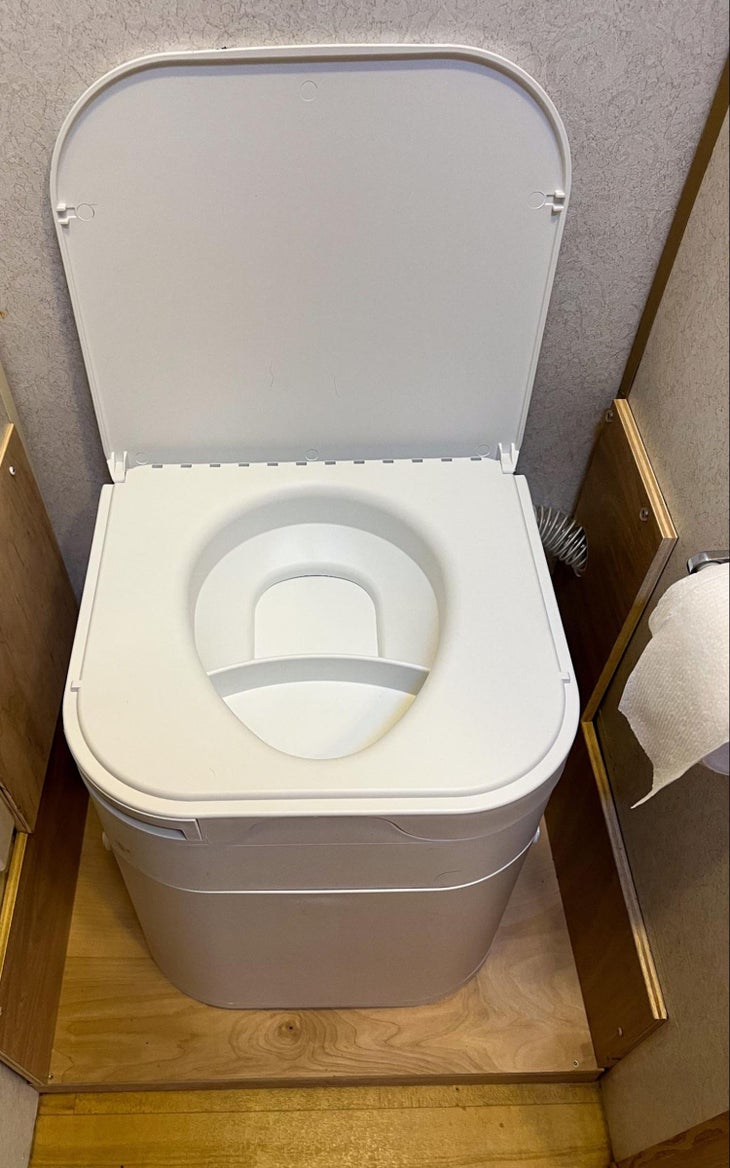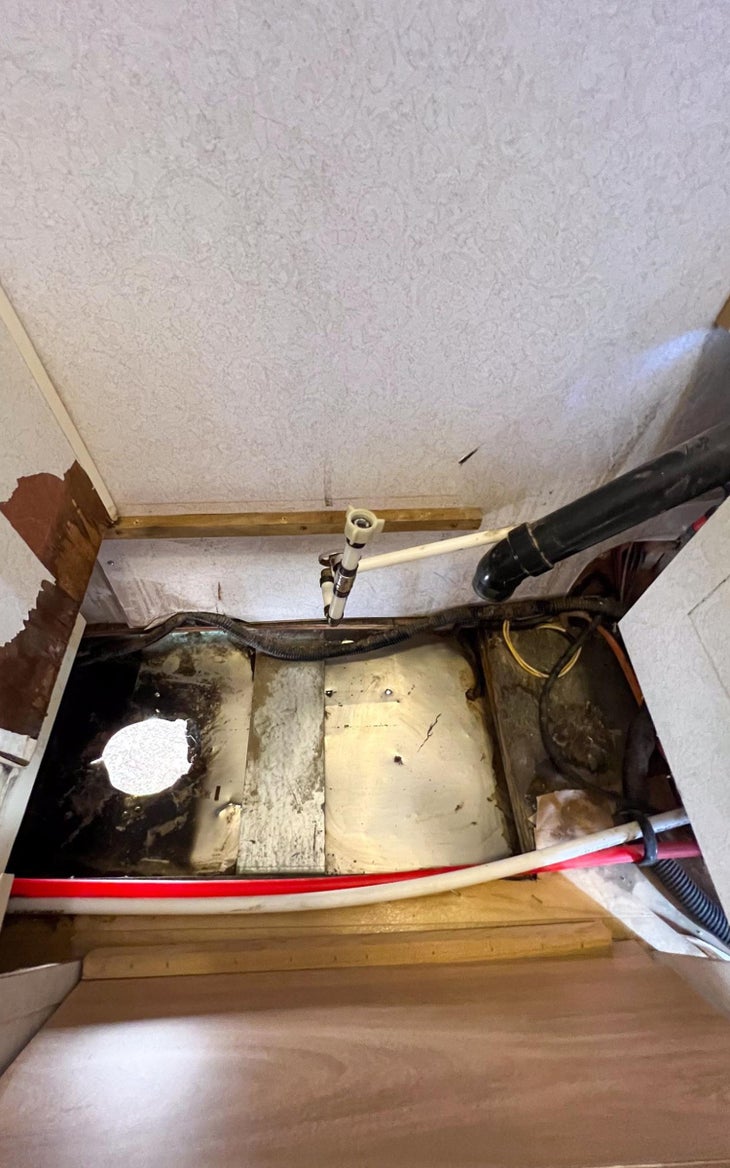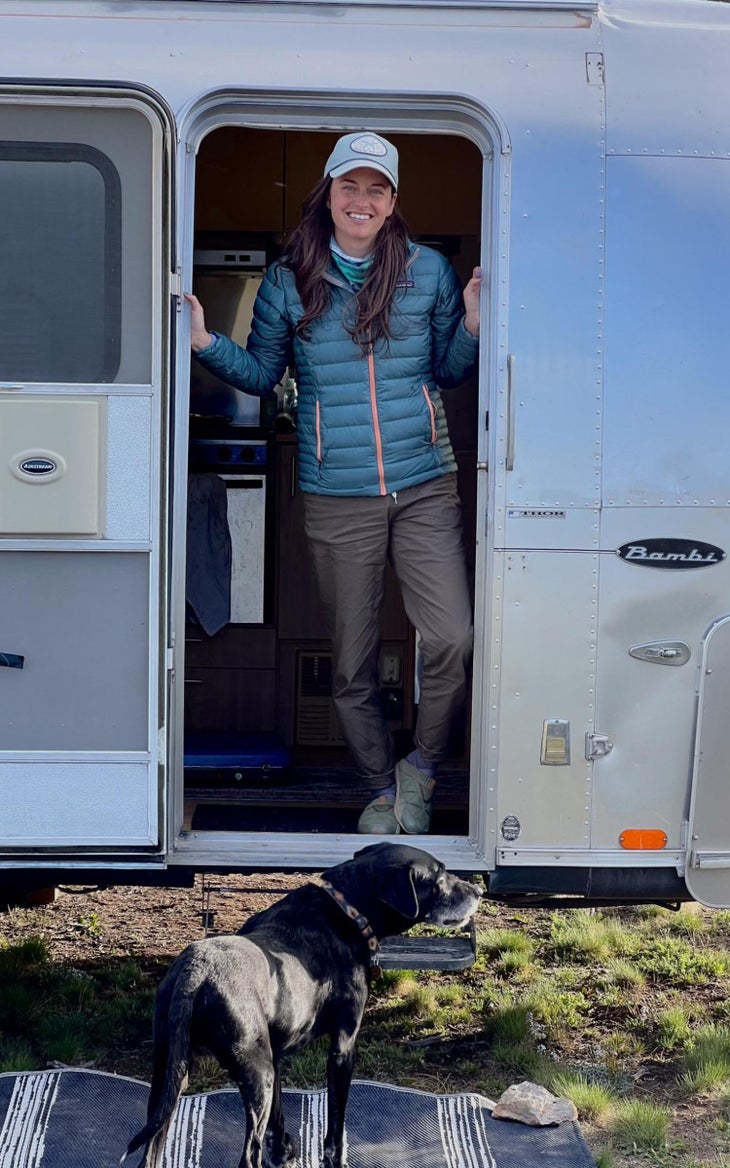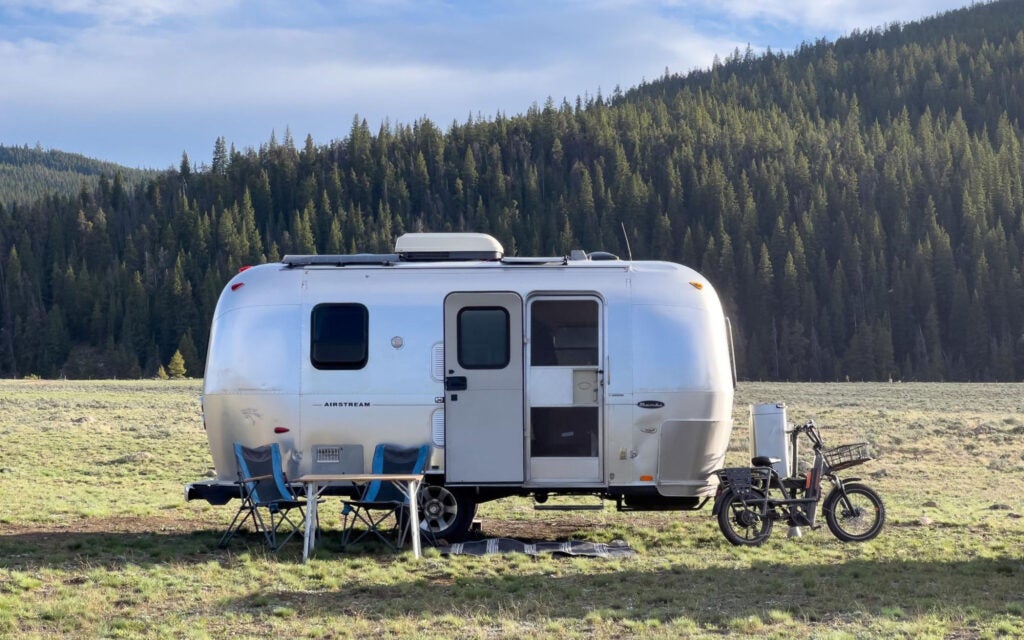No products in the cart.
Outdoor Adventure
Why You Should Install a Composting Toilet in Your Camper
I want to paint a picture for you, and it’s not a pretty one. It’s 30 degrees, and lightly snowing with a crisp, 15-mile-per-hour wind blowing in my face. For the last hour, I’ve been kneeling next to my Airstream holding a hair dryer, trying fruitlessly to thaw the black tank dump valve, which had frozen overnight.
This was a year ago. I’d made a classic, rookie RVer mistake and forgot to empty the black tank before the temps dropped. It took me an hour and a half of holding my wife’s hair dryer up to the valve, pouring boiling water over it, and dumping hot water down the toilet before I was finally able to coax a frozen poopcicle from hell through the waste hose.
I only made that mistake once.
Most travel trailers and camper vans come equipped with traditional holding tanks to collect wastewater—a gray tank collects water from the sinks and shower, while the black tank stores wastewater from the toilet—to be dumped at an RV dump station once they’re full. This setup has been used forever in the RV world, and it’s a pretty quick and simple process overall—provided you don’t let anything freeze. That said, there are some major drawbacks for folks who like to get off the beaten path and boondock for long periods of time.
The first challenge is running out of capacity. Chances are you’ll run out of fresh water and fill your gray and black tanks long before you run out of electricity or propane, so the length of your stay is usually limited by your tanks. Traditional flush toilets also use a lot of fresh water to operate, further compounding the problem.

If you’re a boondocker and like to camp at remote, dispersed sites without hookups, you’ll also have to seek out a dump station to empty those tanks, and make a special trip before you can go home. The vast majority of RVs are designed to pull into a paved campground loop, plug into shore power and city water, and dump the tanks at the campground when you leave.
And as my poopcicle story illustrates, holding tanks are not cold-weather friendly. My wife Sarah and I tend to push the limits of our “three-season” trailer and run it wet (which in RV-speak means full of water) quite often in very cold conditions by employing lots of classic tricks like leaving the cabinet doors open to expose the plumbing, and using a fan to help circulate heat. Why bother? Well, we think if you’re going to go to the trouble of towing a trailer you should be able to use all the features, no matter what time of year it is.

We dialed in our system over a number of really cold hunting trips and some mid-winter ski trips in our Airstream, and found the biggest limiting factor was the toilet. That was disappointing, because we really only use it when the weather is bad or it’s so cold that digging a hole is impractical (like in the winter). So, I dived into the world of adventure rig waste disposal to find a solution that better fit our needs.
Choosing the Right Toilet for Your Camper
If you want a toilet in your rig, your options are basically limited to traditional holding tanks, cassette toilets, composting toilets, macerating toilets, incinerating toilets or dry flush toilets. I’ll spare you the novel that could be written about the pros and cons of each and tell you that after extensive research and using most of these in various rigs over the years, I settled on a composter. The rest either use too much water, are gross to empty, incredibly expensive, or, in the case of the dry flush toilet, fill up quickly and create lots of excess trash that has to sit in a landfill.

A composting toilet seemed like the perfect solution for us. They don’t use any water, and work by separating solids from liquids, which keeps smells down and allows the solids to compost in a medium like coconut husk fibers. Your pee gets diverted into a glorified pee bottle, which you empty much more frequently than the solids bin. That bin can be emptied into a compost pile to finish composting, or bagged up and thrown in the trash (just like a diaper).
After looking at several options, I chose to install an OGO Origin in our Airstream. The dimensions worked perfectly for the space, it had the largest urine bottle (2.4 gallons!) of the ones I looked at, plus a powered vent fan and electric agitator. It’s also one of the only toilets on the market that allows you to empty the urine bottle without having to remove or look into the solids bin, which sounds silly but is very nice in practice.
Installing a Composting Toilet
Installing the OGO is dead simple and just requires a 12 volt power source if you want to use the fan. After removing the old toilet, you simply use four screws to hold the OGO in place. I was able to tap into nearby 12-volt wiring and connect the OGO’s exhaust hose to the Airstream’s existing black tank vent pipe—it was essentially plug and play. I created more work for myself by removing the old black tank in an effort to make some more space in the bathroom and save weight, but you can also simply plug the hole and keep the black tank in place.

Going with a composting toilet was a bit of an experiment and took some convincing for Sarah. If you dig around online, you’re likely to see some negative opinions about composters on various RV forums and Facebook groups. After using the OGO for the last 6 months, we couldn’t be happier with the switch, and have come to believe that the folks making noise about them online either haven’t actually used one, or are more traditional RVers who winterize their campers for 6-9 months out of the year and only camp in established campgrounds with dump stations.

Our biggest worry was that the new toilet would smell or that dealing with the waste would be a gross headache, but neither turned out to be true. The OGO’s urine diverter trap door helps make sure that only solids go into the solid bin, and the electric agitator makes it easy to keep waste well-mixed with compost material in the solids bin. Those features, plus the exhaust fan, mean we’ve never noticed any smell whatsoever.
Waste Management with a Composting Toilet
Dealing with the waste is about a million times more pleasant than dumping tanks and fighting with a stinky slinky—after using this composting toilet, I honestly have no idea why anyone would choose to use traditional RV holding tanks if they had a choice. You simply empty the urine bottle when it’s full (the OGO has a nice sensor that alerts you when it’s getting close), and either dump the solids bin into your compost pile or into a trash bag (if your local area allows it) once it’s full.
According to OGO, the bin is good for about 25-30 uses depending on how often it’s being used and the number of people using it. I’ll let you do your own math on that, but in practice that means a couple should be able to use it for a couple of weeks of continuous use before it needs to be dealt with. If you’re a weekend warrior, you’ll likely be able to use it for months without needing to empty it, so long as you make sure to push the agitator button fairly regularly.
I was a bit hesitant the first time I emptied mine, but there was no discernible smell or grossness—it just looks like you’re dumping out a pile of black soil. If you’ve used a compost bin or compost pile before, you know exactly what it’s like. One thing to keep in mind is that OGO says it takes 12-18 months for “humanure” to fully compost, so you don’t want to just sprinkle it in your garden straight from the bin. It’s also important to check your local regulations and laws regarding using and disposing of compost.
Final Verdict
Overall, I couldn’t be happier with the OGO Origin. It saves us a ton of water in our camper, keeps the overall weight down since we no longer have a black tank, is fully usable in cold conditions, and is so much more pleasant to deal with than a traditional RV toilet. We also got the unintentional benefit of gaining more ground clearance by eliminating the low-hanging tank dump valves.

That said, there are some composter-specific maintenance tips that will improve your experience with a composting toilet: use compostable toilet paper; regularly press the agitator button; and depending on your area’s climate, you may need to manage the moisture level in the solids bin to keep it happy (we do this with a spray bottle and it’s no big deal).
Of all the modifications I’ve made to our Airstream, adding a composting toilet has made by far the biggest difference in allowing us to take our trailer off-grid and do so even in the colder months of the year. I have no idea why more rigs aren’t sold with a composter right from the factory, and hope that will change as more people start to see the benefits of ditching a traditional toilet and black tank.
More Adventure Rig Reads
This New Drawer System Will Revolutionize How You Pack Your Truck
How to Turn Your Airstream into an Off-Grid Capable Adventure Rig
Have We Found the Ultimate Truck Topper Solution?
Source link

